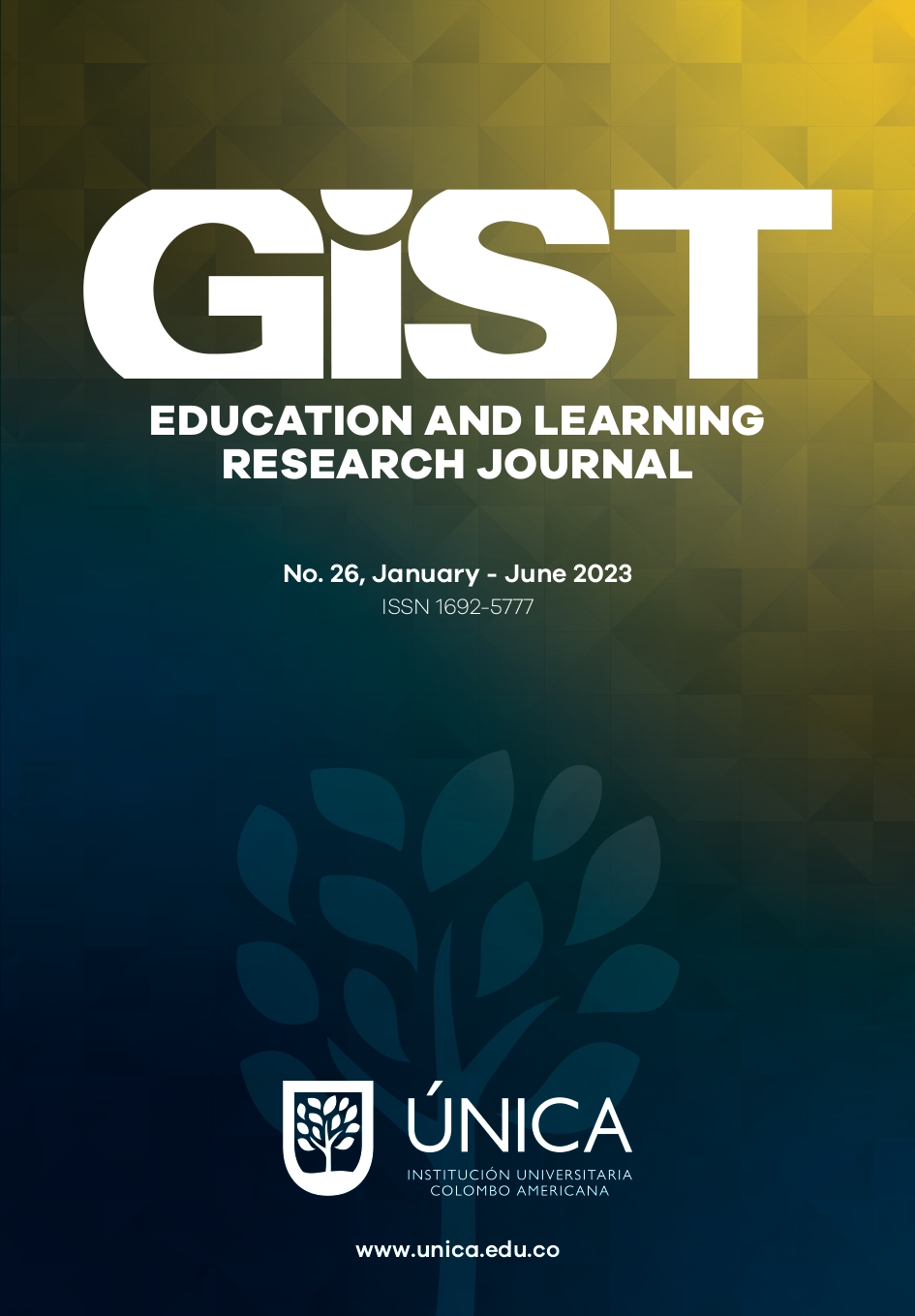EFL Students’ Suggestions to Maintain Their Willingness to Communicate in Online English Language Lessons
DOI:
https://doi.org/10.26817/16925777.1615Keywords:
Willingness to communicate, online English language lessons, EFL students, suggestions to maintain willingness to communicateAbstract
Willingness to communicate (WTC) can enhance English as a foreign language (EFL) students’ English, so it has become a significant research topic. In the literature, there are several studies conducted on the reasons which can affect EFL students’ WTC. Yet, to the researchers' best knowledge, little has been known about what EFL students suggest doing to maintain their WTC in online English language lessons. Therefore, the present study aimed to find out EFL students’ suggestions to maintain their WTC in online English language lessons. It was designed as a qualitative case study. 40 Turkish EFL students participated in the present study. The data were collected through an open-ended question and content analyzed. The findings of the present indicated that EFL students made several lesson-, topic-, activity-, teacher-, class-, assignment-, and program-related suggestions. The findings were discussed, the limitations of the study were explained, and suggestions for further studies were made.
Downloads
References
Aomr, J. A. W., Seng, G. H., & Kapol, N. (2020). Relationship between willingness to communicate in English and classroom environment among Libyan EFL learners. Universal Journal of Educational Research, 8(2), 605-610.
Basöz, T., & Erten, I. H. (2018). Investigating tertiary level EFL learners' willingness to communicate in English. English Language Teaching, 11(3), 78-87.
Brod, C. (1984). Technostress: The human cost of the computer revolution. Basic Books.
Cao, Y. (2011). Investigating situational willingness to communicate within second language classrooms from an ecological perspective. System, 39(4), 468-479.
Dewaele, J. M. (2019). The effect of classroom emotions, attitudes toward English, and teacher behavior on willingness to communicate among English foreign language learners. Journal of Language and Social Psychology, 38(4), 523-535.
Isma, A., & Baharuddin, A. F. (2022). Exploring students’ willingness to communicate (WTC) in Indonesian EFL classroom. Proceedings of English Linguistics and Literature, 3, 78-85.
Kamdideh, Z., & Barjesteh, H. (2019). The effect of extended wait-time on promoting Iranian EFL learners' willingness to communicate. International Journal of Instruction, 12(3), 183-200.
Kang, S. J. (2005). Dynamic emergence of situational willingness to communicate in a second language. System, 33(2), 277-292.
Kaufmann, R., & Tatum, N. T. (2018). Examining direct and indirect effects of classroom procedural justice on online students’ willingness to talk. Distance Education, 39(3), 373-389.
Kruk, M. (2019). Dynamicity of perceived willingness to communicate, motivation, boredom and anxiety in Second Life: The case of two advanced learners of English. Computer Assisted Language Learning, 35(1-2), 190-216.
Kruk, M. (2021). Changes in self-perceived willingness to communicate during visits to Second Life: a case study. The Language Learning Journal, 49(2), 240-250.
Lee, J. S., & Hsieh, J. C. (2019). Affective variables and willingness to communicate of EFL learners in in-class, out-of-class, and digital contexts. System, 82, 63-73.
Lee, J. S., & Liu, L. (2022). Dynamicity of EFL learners’ willingness to communicate in an online class. Journal of Multilingual and Multicultural Development, 1-19.
Ma, X., Wannaruk, A., & Lei, Z. (2019). Exploring the relationship between learning motivation and L2 WTC in an EFL classroom among Thai EFL learners. English Language Teaching, 12(7), 33-45.
MacIntyre, P. D., Clément, R., Dörnyei, Z., & Noels, K. A. (1998). Conceptualizing willingness to communicate in a L2: A situational model of L2 confidence and affiliation. The Modern Language Journal, 82(4), 545-562.
MacIntyre, P. D., & Doucette, J. (2010). Willingness to communicate and action control. System, 38(2), 161-171.
Mulyono, H., & Saskia, R. (2021). Affective variables contributing to Indonesian EFL students’ willingness to communicate within face-to-face and digital environments. Cogent Education, 8(1), 1-15.
Punyaporn, P., & Soontornwipast, K. (2022). An exploration of students' willingness to communicate in Thai EFL online classroom. Arab World English Journal (AWEJ) Special Call on CALL, 8, 70-87.
Şener, S. (2014). Turkish ELT students' willingness to communicate in English. ELT Research Journal, 3(2), 91-109.
Tan, K. E., & Phairot, E. (2018). Willingness to communicate among Thai EFL students: Does English proficiency matter?. Journal of Asia TEFL, 15(3), 590-602.
Shao, Q., & Gao, X. A. (2016). Reticence and willingness to communicate (WTC) of East Asian language learners. System, 63, 115-120.
Yashima, T. (2002). Willingness to communicate in a second language: The Japanese EFL context. The Modern Language Journal, 86(1), 54-66.
Zhang, J., Beckmann, N., & Beckmann, J. F. (2022). One situation doesn’t fit all: Variability and stability of state willingness to communicate in a Chinese College English classroom. Language Teaching Research, 26(3), 504-529.
Downloads
Published
How to Cite
Issue
Section
License
Copyright (c) 2023 GIST – Education and Learning Research Journal

This work is licensed under a Creative Commons Attribution-NonCommercial-NoDerivatives 4.0 International License.
| Article metrics | |
|---|---|
| Abstract views | |
| Galley vies | |
| PDF Views | |
| HTML views | |
| Other views | |








